Culture, Convenience and Childhood Memories: Why Laundromats Hold a Special Place in American Hearts
Find out why Americans prefer to do their laundry in laundromats: how everyday life is organized, how much laundry costs, and why this has become the norm even for wealthy people in the U.S.
Ask anyone who has just arrived in the USA what struck them most about American daily life. Some might say the huge food packages in supermarkets. Others might mention neighbors’ smiles and endless conversations about the weather. But almost certainly, on that list will be something that initially causes a bit of confusion: “laundromats on every corner.” Large spaces filled with washing machines and dryers, where locals come from morning till night — carrying bags of laundry, baskets, and even children.
And this is in a country where most people don’t just own the latest model iPhones and cars, but have two garages per household and their own swimming pool. You’d think everyone could afford a washing machine at home. But no. Laundromats (or as they are called here — laundromats) remain in demand. More than that, they have become a cultural code — a part of everyday routine, social life, and even cinema. Just think about how many scenes in American movies take place there: declarations of love, philosophical conversations, arguments, chance encounters.
So what’s the deal?
Why don’t Americans do laundry at home?
How did public laundromats become a norm, rather than a sign of poverty?
And why, in the 21st century — when robots vacuum apartments and refrigerators order groceries themselves — do people still spend hours in places where machines hum and detergent smells?
We explore this phenomenon without stereotypes and with an understanding of the local context — so you won’t just be surprised, but maybe even see American everyday life in a new light.
In the U.S., there are over 35,000 self-service laundromats, and each year they process laundry worth more than $5 billion. It’s a full-fledged industry with its own chains, brands, business models, and even... franchises.
What is a laundromat and how does it work
Laundromat is not just a laundry. It’s a whole microcosm where you can meet a student with a backpack, a busy mom with three bags of laundry, an energetic retiree with a newspaper and coffee, and a young couple discussing weekend dinner plans. In America, the laundromat is a familiar part of life, like a pharmacy around the corner or a coffee to go.
Formally speaking, a laundromat is a self-service laundry where each customer washes and dries their own clothes using the installed machines. But in practice, it’s much more interesting.
How it works
You come with your laundry. Sometimes with just one bag, sometimes with a suitcase. Usually, a laundromat has several rows of large and small washing machines, as well as powerful dryers. Here’s what you need to do:
- Choose the right machine based on the load size.
- Load your laundry and add detergent (in some places you can buy it right there from a vending machine).
- Pay for the wash — most often with coins (usually quarters — 25 cents), tokens, or a card. Some modern laundromats accept mobile payment apps.
- Press “Start” and wait 20 to 40 minutes for the wash to finish.
- Transfer the laundry to the dryer — this step is mandatory. First, few people have dryers at home. Second, Americans don’t wear or bring home damp clothes.
- Pay for the drying and wait until your clothes are ready.
Why is the dryer mandatory? In the U.S., people almost never hang clothes to dry — neither on balconies nor inside homes. It’s considered inconvenient, unaesthetic, and even unhygienic. That’s why machine drying is the norm, and at home instead of a clothesline, there’s a dryer drum or... nothing.
Also, the dryer disinfects clothes, killing remaining bacteria and dust mites. This is especially important for families with children and allergy sufferers.
Many imagine laundromats as dull places with the smell of detergent and the humming of machines. That’s not entirely true. Modern laundromats can be:
- Open 24/7 — the perfect option for those who work late.
- Equipped with waiting areas — with TVs, sofas, and free Wi-Fi.
- Combined with cafés, bars, and arcade machines — sometimes people come there just to hang out, not only to do laundry.
- Focused on comfort — air conditioning, restrooms, vending machines with drinks and snacks have become the norm.
In some cities, laundromats even serve as social spaces where people come not just to do laundry but also to socialize. There are laundromats that regularly host quizzes, mini-concerts, and even art events.
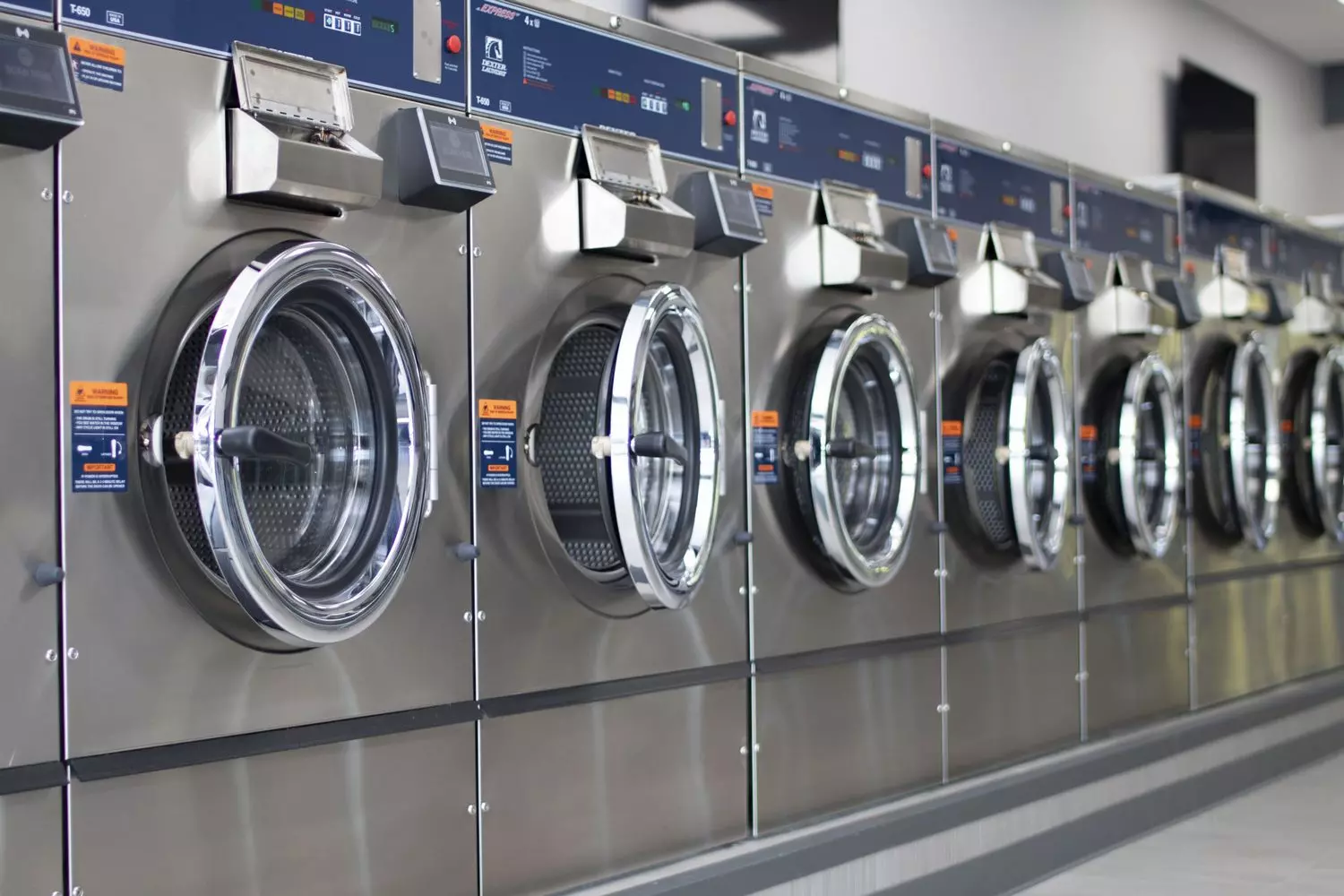
Historical Roots: Why It’s Set Up This Way
To understand why self-service laundromats remain popular in the USA, it’s worth looking back — to a time when owning a washing machine was a luxury and the word "convenience" had a very different meaning.
Perhaps no one could have imagined that a small laundry opened in 1934 in Fort Worth, Texas, would become a symbol of an entire era. At the time, it was truly a revolutionary idea: to place several machines in one room so that people could come and use them themselves, paying for the wash. This was how the first laundromat in history was born.
It was the era of the Great Depression. People had no money for personal laundresses or home appliances. And laundromats became a lifeline for the poorest segments of the population — especially for women, who then bore the full burden of household chores.
- 01. Women and laundromats: liberation in the literal sense
Until the 1950s, washing was extremely hard physical labor. Clothes were soaked, boiled in tubs, and wrung out by hand. Washing one set of bed linens could take half a day.
That’s why the appearance of laundromats was perceived not just as convenience but as a step toward freedom. It was a technical and social liberation for women — especially in cities. You could simply bring your laundry, load the machine, and breathe out. It’s no coincidence that by 1950 laundromats were present in nearly every neighborhood of major U.S. cities. - 02. Urban growth — growth of laundromats
In the post-war years, America was rapidly developing. Cities grew upward, and apartment buildings appeared, often without space for washing machines. While washing machines were slowly becoming common in private suburban homes, in cities they remained an unaffordable luxury.
So a solution emerged: separate facilities with shared access to equipment. This not only saved on buying machines but also made efficient use of urban space. The model quickly took hold and became the norm. - 03. A habit that became culture
When machines became cheaper and accessible to many Americans, laundromats might have been expected to disappear. But habit proved stronger than progress.
Americans are pragmatic. If something works — why change it? Convenient, 24/7, spacious laundromats remained part of everyday life. They became part of the urban landscape, like a corner store or a café across the street.
Moreover, the laundromat is not just functional. It’s a multi-layered daily ritual, almost like grabbing coffee before work. And for some, it’s even a reason to leave home, socialize, and change the scenery.
Interesting fact: In New York, nearly 70% of rental apartments still do not have their own washing machines. Not because tenants are poor — it’s simply a historical circumstance, and it’s convenient.
Perhaps the most interesting thing about American laundromats is how attitudes toward them have changed. If in the 20th century laundromats were seen as something “for those who can’t afford a machine,” today they are a perfectly normal, even eco-friendly and logical choice. Laundromats are no longer a compromise but a choice.
Laundromats in the USA are more than just places to do laundry. They are part of the cultural code, a way of life, a habit rooted in the distant past. And understanding this means understanding America’s deep logic: convenience, economy, and freedom come first.
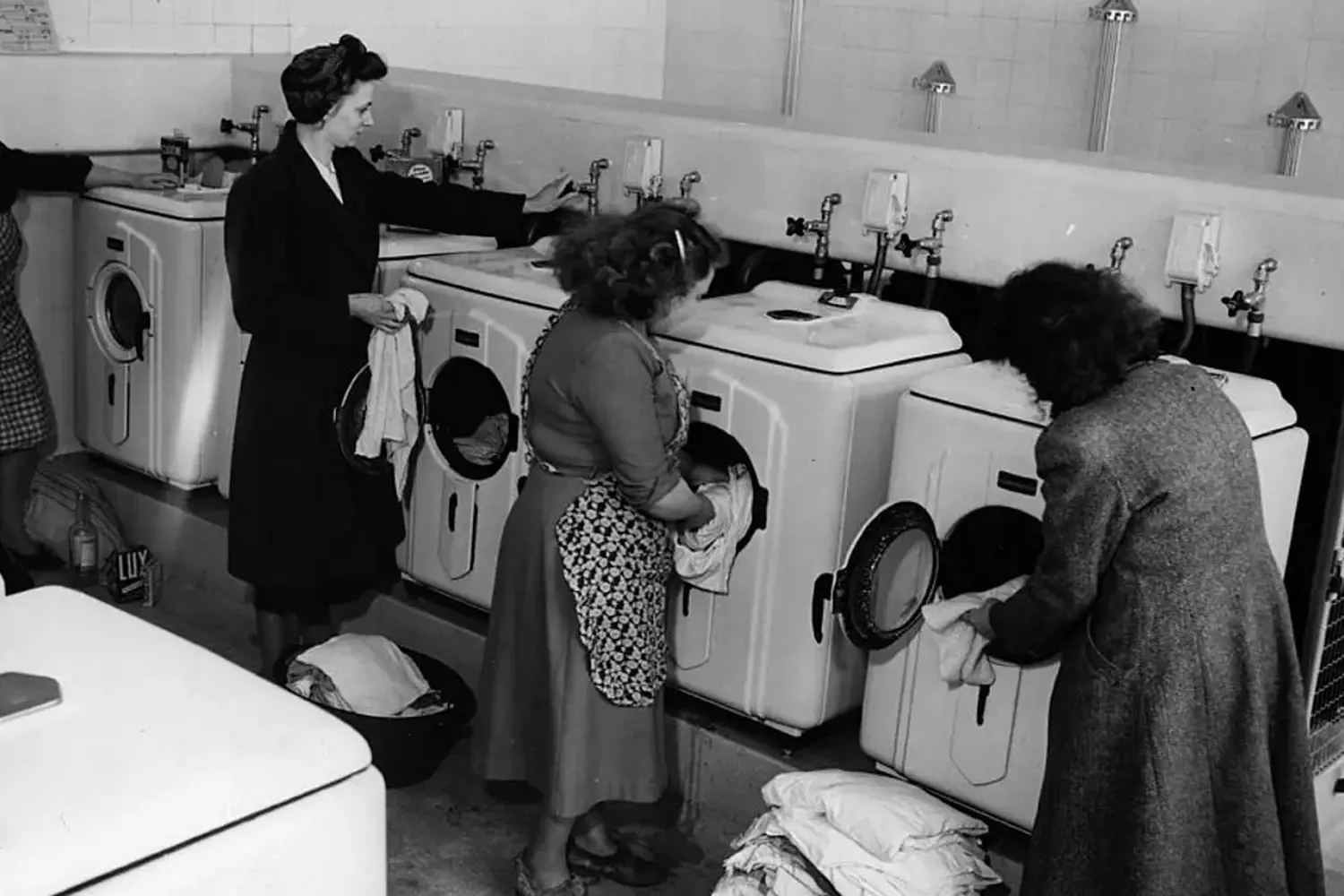
Why do people in the U.S. still go to laundromats?
For many foreigners, this is a mystery. America is a country of advanced technology, huge houses, and household comfort. But spend just a couple of months here — and you’ll be surprised to find that visiting a laundromat (self-service laundry) is not rare, but a routine part of life.
So why do people who have the latest model iPhone go to public laundromats to wash their towels? Let’s figure it out — without myths and stereotypes.
- 01. Architecture, rent, and restrictions
One of the most prosaic but significant factors is the architecture of housing.
- Old buildings in New York City, Boston, Chicago, and other metropolises often lack the plumbing for washing machines. We’re talking about buildings from the early 20th century or even earlier. Installing machines there is like drilling a hole in a museum wall.
- Many Americans rent their homes. Here strict landlord rules come into play. Installing a personal washing machine requires approval, can lead to fines, and in most cases is simply prohibited.
But the main reason — even if renting allows it, landlords don’t want to risk it: appliances = leaks = insurance cases and headaches. Easier to forbid.
- 02. Economics and speed
Paradoxically, washing at a laundromat can be more cost-effective than at home — especially for families, couples, or busy people.
- Laundromat machines are industrial and spacious. Up to 20 kilograms of laundry per load!
- Powerful dryers stand right next to them.
- You can wash everything in one visit: clothes, bedding, towels — and leave with dry, warm items in about 90 minutes.
Compare this to home washing: three or four cycles; at least two hours; then hanging clothes (if no dryer); then drying, then ironing.
- 03. Convenience and infrastructure
Modern laundromats aren’t dark basements smelling of bleach and humming machines, like those imagined in post-Soviet countries. In the USA, a laundromat is almost like a small café with amenities: spacious rooms, TVs, Wi-Fi, coffee machines, snacks, waiting areas with sofas. Some even have arcade machines or children’s corners.
Additionally, many laundromats offer extra services: ironing, bagging laundry, dry cleaning, express “turnkey” washing — you just drop off a bag and pick up the finished laundry. - 04. Culture and habit
And finally, the American mentality. Doing laundry at a laundromat is not shameful, it’s normal. Even if you have a house with a pool, it’s quite possible that once a week you go to the laundromat to wash blankets. Why?
- It’s customary. From childhood.
- It’s part of the ritual: laundry basket, take-away coffee, favorite podcast in headphones.
- Many use it as “me time”: a chance to get out of the house and take a break from daily tasks.
In some parts of the USA, the laundromat is even a social spot. Notices hang there, events are held, children’s drawings are exhibited. Some have mini-libraries, others have play areas for kids. So the laundromat isn’t just about washing — it’s about community.
Alternative: washing at home
Of course, millions of Americans have their own washer and dryer — especially in private houses, townhouses, premium apartments, and new buildings with in-unit laundry rooms.
But even among them, many prefer the laundromat. Why?
- Home machines are usually designed for 5–7 kg loads, not 20.
- Dryers are not always powerful; clothes may remain damp.
- Electricity in the USA is expensive — especially in California and New York City.
- Washing and drying at home takes at least two hours or more.
- With a busy lifestyle, it’s easier to pop into a laundromat and get everything done at once.
Thus, going to a laundromat in the USA is not about poverty. It’s about choice, logistics, and culture. In some cases, it’s really the only way to do laundry. In others — just convenient. And sometimes — a habit that brings pleasure. And honestly, there’s a special charm in that.
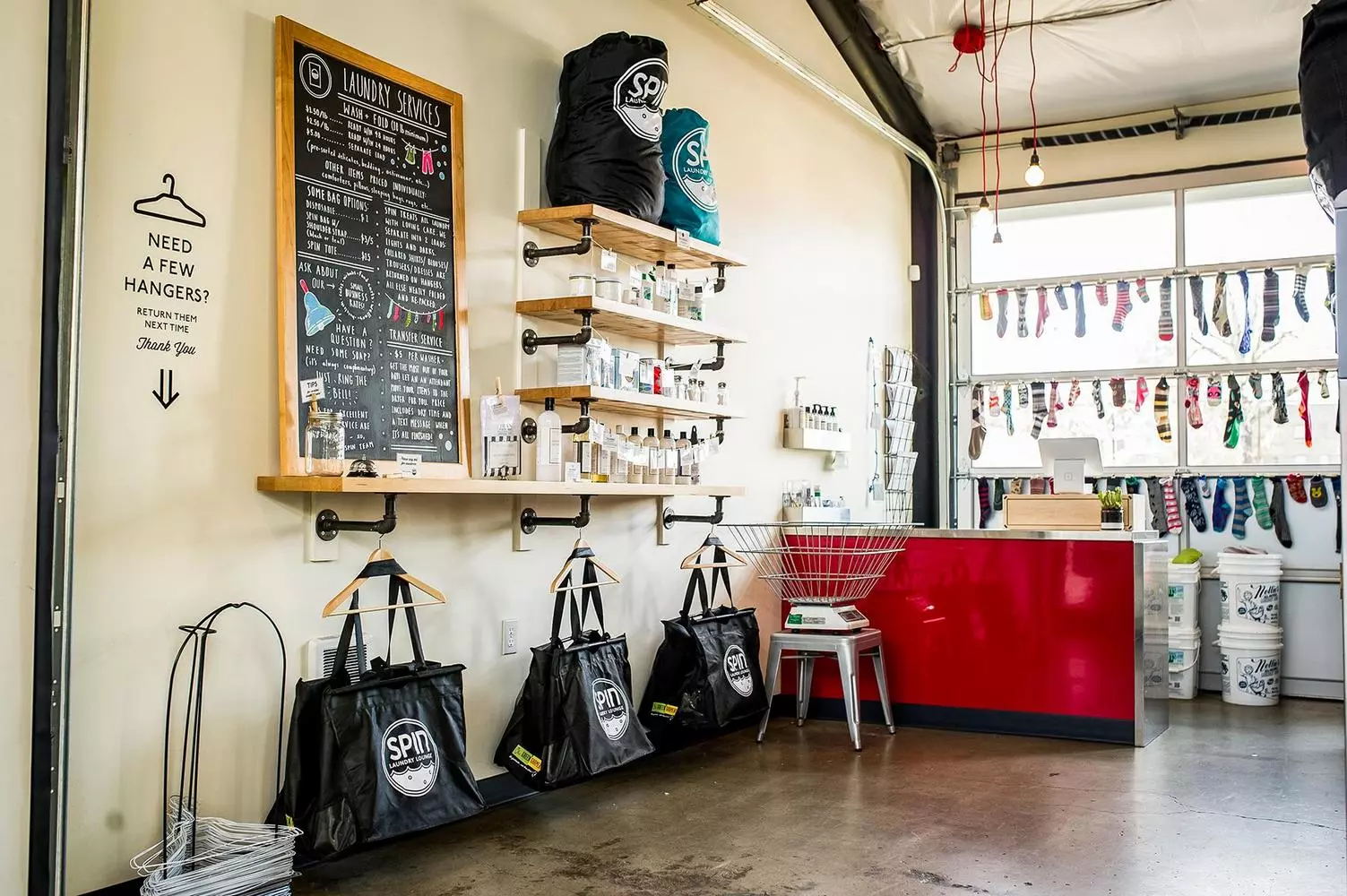
How much does laundry cost: honest figures and useful details
If you’ve ever watched an American TV show, you’ve probably seen a laundromat scene — characters washing clothes, chatting with neighbors, sipping coffee, and discussing something. But how much does it really cost? And is it true that doing laundry in the USA is a whole science?
Let’s break it down step by step: from basic washing to additional services.
- 01. Average cost of laundry
The price of laundry in the USA depends on several factors:
- The state (New York is more expensive than Texas),
- The area (prices differ in downtown Los Angeles compared to the suburbs),
- The size of the machine and type of laundry (the bigger the load — the higher the price).
- 02. Approximate prices:
- Washing: from $2 to $5 per load
- Drying: from $1.5 to $2.5 for 30–45 minutes
Usually one drying cycle is enough, but if there’s a lot of laundry or it’s bulky (like down jackets or towels), two cycles may be needed. Pro tip: Some laundromats offer an “express dry” for $3 — hotter but faster.
- 03. How to pay?
Unlike traditional coin-operated machines, more and more laundromats today use card systems. But old-fashioned tokens and quarters (25 cents) are still common. Payment options include:
- Coins — often only quarters
- Tokens — sold on site in machines
- Laundromat card — reloadable, used like a transit pass
- Cashless terminals — in more modern laundromats
- Some even accept Apple Pay or Google Pay
- 04. How much does laundry cost for a family?
Suppose you have a family of three to four people: clothes, towels, bedding. Typically, this includes:
- 2–3 washing loads ($2.5 x 3 = $7.5)
- 1–2 drying loads ($2 x 2 = $4)
Total: on average $10–12 for everything. This is per week, including full loads and freshly cleaned clothes “ready to go.”
- 05. Additional services: for those who want everything at once
Modern laundromats in the USA are not just about washing machines. You can get almost hotel-level service. Here’s what you can order for an extra fee:
- Shirt ironing
From $1 per item, often done by hand with quality - Packaging laundry in bags
$2–5 per order — convenient if you don’t pick it up immediately - Dry cleaning
From $5 per item — suits, coats, delicate fabrics - Drop-off laundry service
$1–2 per pound (~0.45 kg) — drop off a bag, pick up clean and dry
In premium laundromats, for example in New York or San Francisco, you can even order home delivery — they pick up dirty laundry in the morning and deliver fresh laundry in the evening.
Laundry in the USA is part of the daily routine, which can be either a 2–3 hour chore at home or a relaxed visit to the laundromat. Surprisingly, for many Americans, going to the laundromat is even a kind of rest: no work, no errands, just you, coffee, and clean clothes.
And although $10–12 per week may seem like a considerable amount, for the comfort, speed, and freedom from household headaches — it’s a quite reasonable price.
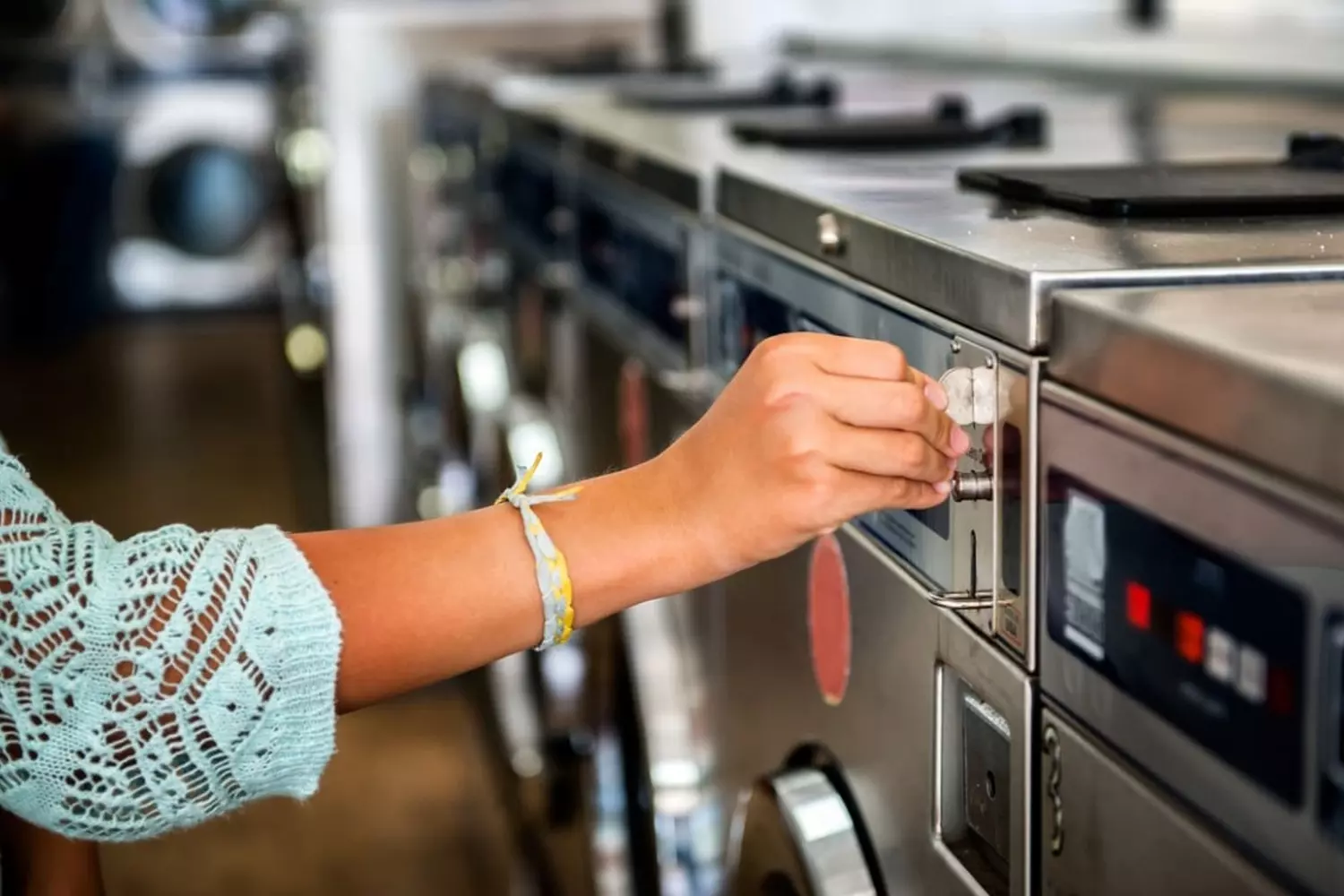
Who uses laundromats most often: a profile of the typical laundromat visitor
When you imagine a laundromat in the USA, sitcom characters immediately come to mind — students arriving with stacks of T-shirts, or a mom with kids carrying almost two bags full of laundry. And this is not just a stereotype: the laundromat is a place where many different lives intersect.
Let’s find out who really makes up the core visitors of American laundromats.
- 01. Students and young people: no time for washing machines
Young people aged 18–25, especially those attending colleges and universities.
- Campuses and dormitories often lack individual washing machines.
- Youth live in rented apartments where appliances are rare.
- It’s easier for them to wash everything once a week than to clutter a tiny apartment with machines.
Besides, for students, the laundromat is also a social place. Meeting people, chatting, working on a laptop — all this conveniently combines with drying jeans.
- 02. Immigrants: the first step into everyday life
People arriving from other countries — especially during the first years after moving.
- They usually rent housing in inexpensive neighborhoods where there’s no washing machine.
- It’s not always clear how to use American appliances — it’s easier to bring everything to the laundromat.
- The laundromat is an understandable and accessible service where you can manage without language skills.
Interestingly, many laundromats in immigrant-heavy areas have instructions in Spanish, Chinese, and Russian.
- 03. Renters in high-rise buildings: old housing stock without conveniences
Apartment renters in older buildings, especially in New York, Chicago, Los Angeles.
- Old US housing stock often lacks the technical possibility to install washing machines.
- Landlords don’t allow washing machines to avoid leaks.
- It’s too expensive to redo plumbing for just one apartment.
As a result, residents even in “good” neighborhoods take 2–3 bags of laundry to the laundromat once a week.
- 04. Families with children: lots of laundry, done quickly
Families with 2–3 children, especially those living in apartments.
- Even if there’s a washing machine at home, dryers are often missing.
- Doing laundry every day is tiring. At the laundromat, everything can be done in one evening.
- Kids have way more dirty clothes: school, sports, outdoor play, pajamas, bedding…
For such families, the laundromat becomes a kind of “home office of cleanliness”: wash, dry, fold, then relax.
- 05. Busy people: no time for laundry at home
Working professionals, couples without children, entrepreneurs, freelancers.
- They have appliances at home but no desire or time to do laundry.
- At the laundromat, they can drop off laundry “ready to go” and pick it up packed.
- This saves time: one visit per week instead of constant hassle.
In these cases, the laundromat is not out of necessity but for comfort and efficiency.
A laundromat in the USA is not about poverty or inconvenience. It’s about choice. Some go there because they can’t do laundry at home, others because they don’t want to. For some, it’s a necessity; for others, a lifestyle.
20 most amazing facts about the USA
Types of laundromats: 4 formats you should know about
America is a country of practicality and services. And if you don’t have a washing machine at home (and many really don’t), laundromats come to the rescue. But not all laundromats are the same.
Laundromats in the USA are not just places to do laundry; they represent a whole ecosystem of formats where you can: operate the machines yourself, drop off your laundry and pick it up fresh and folded, or even not leave your home at all — couriers will handle everything.
Let’s break down the types of laundromats in America and which format suits whom.
- 01. Self-service laundromats (coin laundry)
This is the classic option. A place where dozens of machines — from old to modern — are waiting for you to insert coins and load your laundry. These laundromats are the most common, especially in cities.
- Pros. Cheap. On average $2–4 per wash and $1.5–2.5 per dry. Full control: you wash and dry yourself. You can fit it into your schedule: many are open 24/7.
- Cons. You have to be there the whole time. Sometimes there are queues and machines are occupied. If the equipment is old, the wash may not be perfect.
Suitable for students, renters without a washing machine, budget-conscious families.
- 02. Semi-automatic laundromats (wash & fold)
This is the “you drop it off — you pick it up, but you don’t wash” option. You hand over a bag of laundry to an employee, and the rest is up to the staff. Average price: $1.50–2.00 per pound (~450 grams). A family-sized 10 kg bag costs about $30–40.
- Pros. You don’t spend a minute on the washing process. Everything is neatly packed — like dry cleaning. They often use high-quality detergents and conditioners.
- Cons. More expensive than doing it yourself. There is a risk someone might wash your jeans with white T-shirts.
Perfect for busy people, parents, and those who value time and order.
- 03. Premium laundromats (full-service)
This is a luxury laundromat with dry cleaning elements. Here, they don’t just wash — they treat silk, cashmere, wedding dresses, or suits. What they offer: delicate fabric washing, dry cleaning, ironing items by category (shirts, pants, curtains), scent options (lavender, neutral, cotton), packaging, delivery, custom covers.
- Pros. Suitable for complex and expensive items. High-quality standards. Often available via subscription (for example, $100 per month for a certain volume).
- Cons. Expensive. Not available in every neighborhood. You need to book in advance or wait in line.
Chosen by businesspeople, artists, and wardrobe owners who require “hand washing.”
- 04. Mobile laundromats (online services)
No laundromat visits needed. You place an order on the website or app, and a courier comes to you. How it works: you register with the service (for example, Rinse, HamperApp, Tide Cleaners). You choose the service: wash only, wash and iron, dry cleaning. You specify address, time, and preferences. The courier picks up your laundry and returns it within 24–48 hours. Prices: from $1.60 per pound, often with a minimum order (for example, $25). Extra charges apply for rush or night delivery.
- Pros. Absolute convenience: you don’t have to go anywhere. Great if you don’t have a car or time. Often includes perks: first order discount, free delivery.
- Cons. Not suitable for small volumes. Less control — you can’t track how they wash. Available mostly in big cities.
Chosen by those who value convenience, order food via Uber Eats, and want laundry “like Netflix.”
How to Choose a Good Laundromat in the USA: A Guide for Newcomers and Beyond
It might seem that all laundromats are the same: you throw in laundry, press a button — and that’s it. But in reality, a laundromat can be either a convenient find or a real headache. Some are clean, cozy, and offer Wi-Fi with coffee, while others have broken machines, flickering fluorescent lights, and questionable crowds.
If you’re new to the USA or just want to switch laundromats, here’s a step-by-step guide on how to choose the right one — so that cleanliness doesn’t cost you your nerves.
- 01. Location: the closer, the better
The ideal option is a laundromat within a 5–10 minute walk from your home. This saves you from carrying heavy bags across the neighborhood or driving around. Things to consider:
- Is it open 24/7 — convenient for “after work” schedules.
- Is there parking if you come by car.
- Is there a café or supermarket nearby — so you can run errands at the same time.
- 02. Cleanliness — criterion #1
If the laundromat is dirty, smells musty, floors are sticky — run away. Hygiene is critical here. You came for cleanliness — not for new germs. What should raise concerns:
- Mold on drum rubber seals.
- Dirty dryer filters.
- Smell of dampness or chemicals.
- Many broken machines with “Out of order” signs.
Signs of good standards: a cleaner is working, staff is visible, machines shine, sanitizers and cloths are available for customers.
- 03. Prices and payment methods: clarity and convenience
In a good laundromat everything is clear and transparent: prices posted, token machines or card terminals, no surprises. Conveniences:
- Ability to pay by card (via app or terminal).
- Loyalty cards are often offered — with bonuses.
- 04. Machines: power and condition
Check the types of machines:
- Are there large capacity machines (15 kg or more) — convenient for bedding.
- Are there high-speed dryers — save time.
- Is the equipment visibly new or well-maintained.
- 05. Comfort: Wi-Fi, outlets, lighting, clean folding tables
Even if you don’t plan to spend hours there — comfort matters. Signs of a good atmosphere: free Wi-Fi, TV or music, outlets for charging, clean tables for sorting and folding laundry, vending machines with coffee, snacks, water, air conditioning or heating depending on the season. - 06. Staff presence on-site
Having an attendant or owner on-site is a big plus. They can help with a machine if something goes wrong, return stuck tokens, and just keep order. Without supervision, laundromats quickly turn into chaotic zones. - 07. Reviews and reputation
Before going to a new laundromat, check reviews on: Google, Yelp, Nextdoor. Pay attention not just to stars but also to comments: are there complaints about rudeness or dirt, mentions of broken machines, notes about coziness, cleanliness, and service. Sometimes a 4.2 rating is better than 5.0 — if the review is genuine and honest.
A good laundromat is not only about clean clothes but also about a comfortable experience. It saves your time, doesn’t ruin your things, and can even become a familiar, almost cozy place you enjoy returning to.
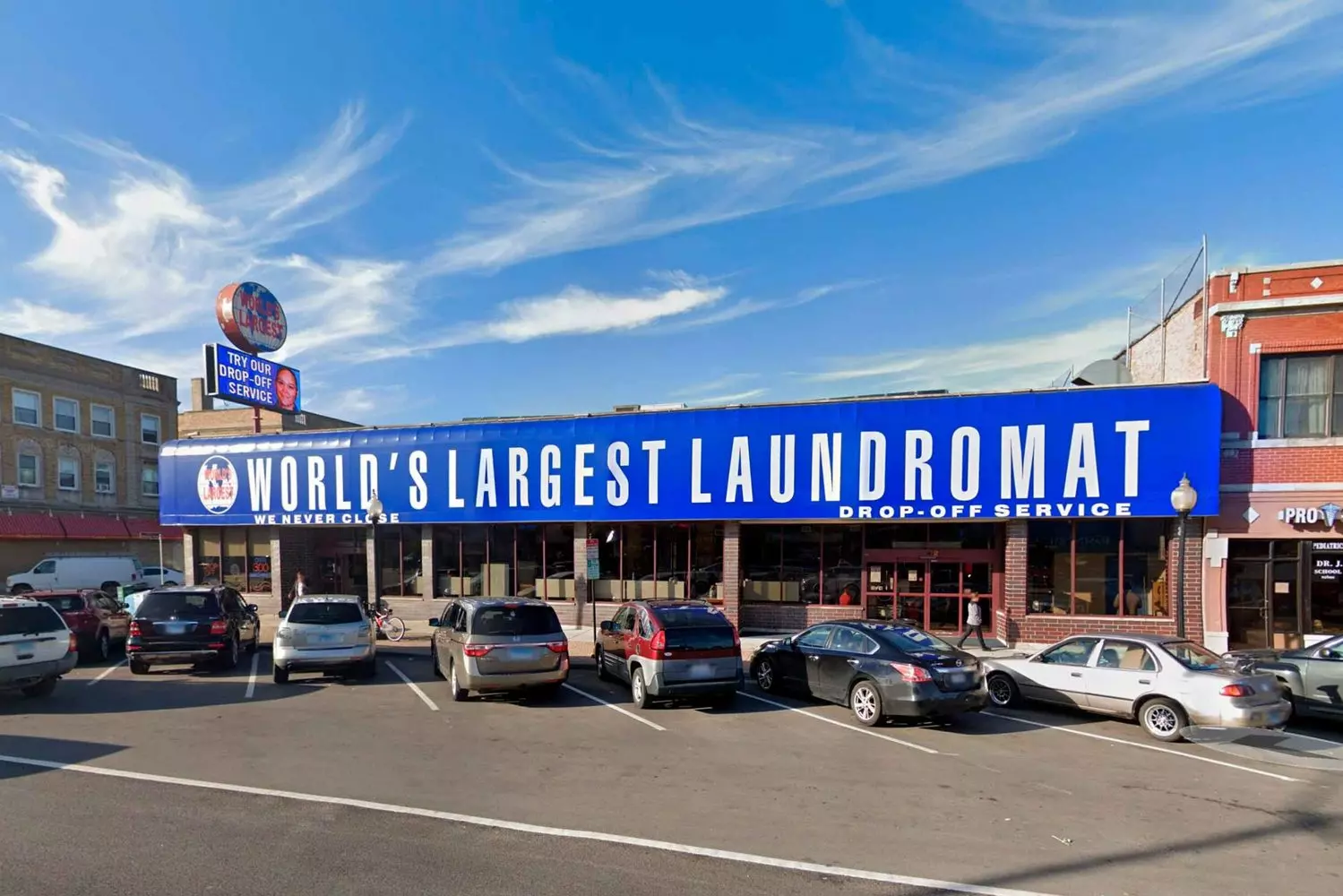
Laundromat as a business in the USA: how the spinning drum turns money
In the USA, a laundromat isn’t just a place where people wash their socks. It’s one of the quietest and most stable business models, operating for years without noise, hype, or TikTok ads.
And yet — it brings in steady income.
Sounds boring? What if I told you that an average laundromat can earn from $15,000 to $300,000 a year — without needing to hire an army of employees?
Let’s figure out why laundromats in America are considered a smart small business that many see as a way to secure passive income or a family asset.
- 01. Minimal labor costs
Most coin laundromats (self-service laundries) don’t have permanent staff. You install the machines, set up cameras, add Wi-Fi and vending machines — and the business runs itself. Cleaning and technical inspections happen just a couple of times a week. - 02. Stable customer flow
- Tenants without washing machines, students, immigrants, tourists, families without dryers — all these groups are regular customers. Plus, people wash clothes regardless of economic downturns. Clean clothes are always needed. This makes the business recession-proof — unlike restaurants or beauty salons.
- 03. Equipment lasts for years
One washing machine drum in a laundromat is rated for 3,000–5,000 cycles. This means you invest in the equipment once, and then it just earns money. Even if a machine charges $3 per wash and serves 20 customers a day — that’s $60 daily from just one machine, or more than $21,000 a year. On average, a laundromat has 20–40 machines. - 04. Flexibility and scalability
You can start a laundromat with: 10 machines in a small space, buy an existing laundromat “turnkey,” or open a premium service with delivery and a mobile app. You can also add vending machines for detergents, coffee, snacks, folding and packaging services (for extra charge), dry cleaning, and loyalty programs. A laundromat easily becomes a mini microservice center. - 05. How much laundromats earn in the USA
According to the Coin Laundry Association, the average laundromat in the USA earns:
- At least $15,000 a year in low-population or older neighborhoods
- On average — $50,000–100,000 a year
- Top end — $300,000+ a year if the location is good, with premium service and traffic
- 06. Who opens these businesses
- Small entrepreneurs, often immigrants
- Retirees and investors — as a source of passive income
- Family businesses — where the husband manages, and the wife does packaging
- Franchisees — popular brands like Speed Queen, Maytag, The Laundry Room
- 07. Business downsides
Though laundromats seem ideal, there are challenges:
- High entry barrier (equipment is expensive)
- Competition in dense areas
- Machine breakdowns = losses
- Not always easy to scale beyond one neighborhood
- Requires constant control of cleanliness, safety, and maintenance
- 08. Why this business “lives on”
- Laundry is a basic necessity.
- Up to 35% of rental housing in the USA doesn’t have a washing machine.
- Many prefer to delegate laundry as a “routine chore.”
- New generations (especially millennials and Gen Z) are willing to pay for comfort — even when it comes to laundry.
If you have startup capital, a suitable space, and market understanding — a laundromat can become a stable business with moderate effort. Especially in cities with many renters, students, tourists, or immigrants.
It’s not trendy, glamorous, or connected to hype technologies. But as they say in America: “Clean clothes don’t go out of style.”
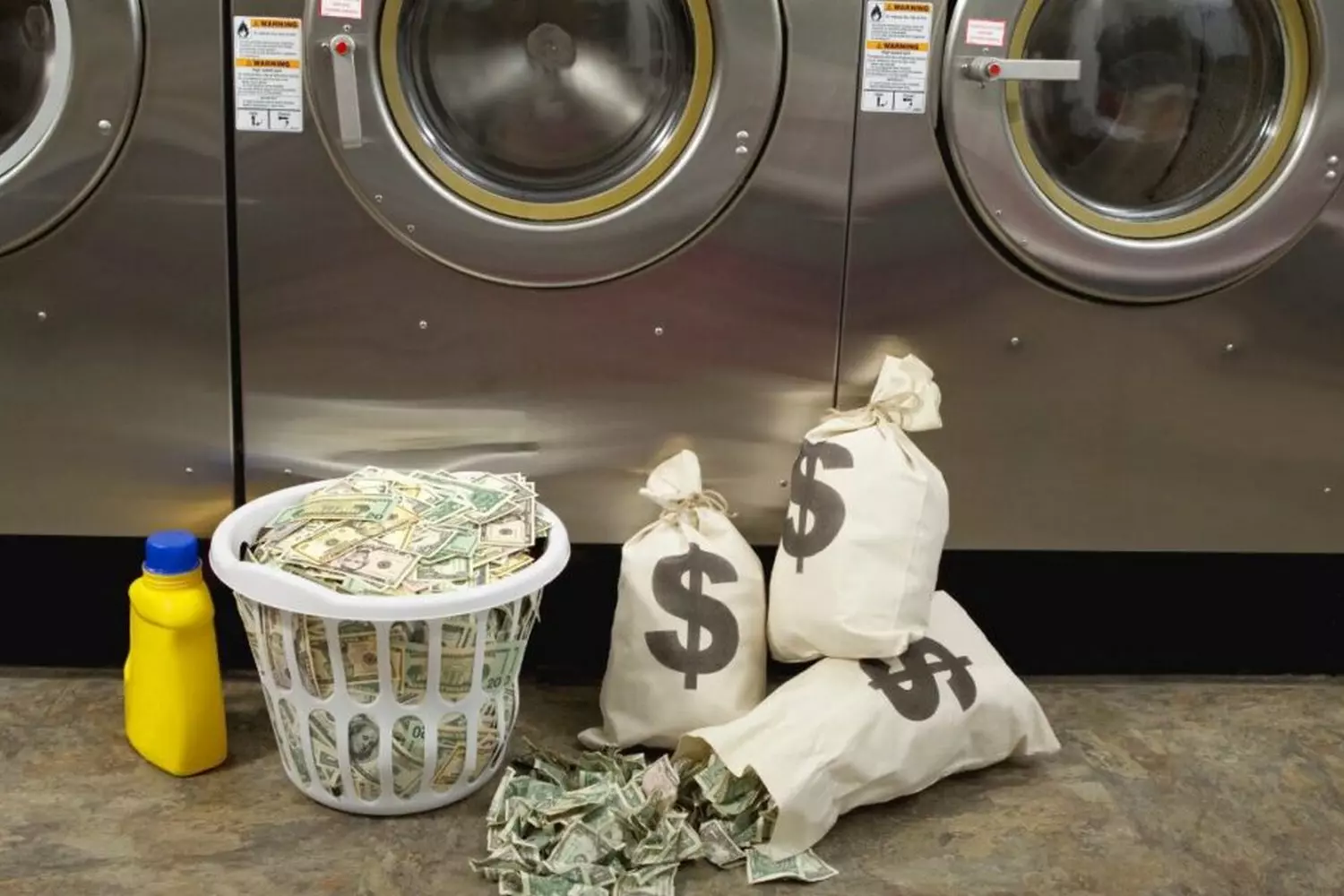
How to behave in an American laundromat: a mini-guide for beginners and beyond
Laundromats in the USA are a unique world. There are no coat checkers, cleaning ladies with rags, or signs that say "No Entry for Outsiders." Everything works on trust, self-respect, and mutual comfort.
Even if you just came to wash a couple of t-shirts, remember — there are people around you who also came hoping for cleanliness and order. To avoid embarrassing yourself or becoming the subject of local stories, here is a short but useful set of rules on how to behave in an American laundromat.
- 01. Don't take more machines than you need
If you came alone, use one machine. At most two, if you really have a large amount of laundry. Taking 4–5 machines at once is a faux pas. Even if you really need to. Especially during evening hours or weekends, when laundromats are busiest. - 02. Keep track of time and don't leave your clothes for too long
A laundromat is not a place for endless Netflix or a half-day supermarket trip. Each machine shows the remaining wash time, and you are obliged to pick up your clothes immediately after the cycle ends. Late by 15–20 minutes? Your underwear might already be waiting for you in the “Lost & Found” box or on a nearby table. And it’s good if it’s just neatly placed — otherwise, don’t be offended. Premium laundromats have SMS notifications about cycle completion. In regular ones, set a timer on your phone. - 03. Maintain basic cleanliness
Americans don’t require you to wear shoe covers, but basic hygiene is sacred.
- Wipe the drum if there is leftover lint or water droplets.
- Don’t scatter clothes around the machine.
- Don’t spill detergent outside the designated areas.
- Use a laundry basket, not the floor.
Remember: the laundromat is a shared space, and cleanliness is everyone’s responsibility. Your respect for others is obvious at first glance.
- 04. Don’t touch other people’s laundry
This is a golden rule. Even if someone’s laundry finished half an hour ago and they haven’t returned — don’t pull it out by hand. In extreme cases, carefully move it to the special basket or a free shelf. But never touch underwear or intimate items. This is perceived as an invasion of privacy, even if the person has been gone for an hour. And under no circumstances put someone else’s laundry into the dryer — even with good intentions. Some people wash delicate items that cannot be dried. - 05. Be polite — and everything will go smoothly
Smile, say "Hello" when you enter, don’t play loud music, don’t have loud phone calls, don’t comment on other people’s clothes. It’s simple — and works perfectly. If you accidentally take someone else’s machine or mix up detergents — apologize, and no one will get upset. Laundromats, like life: be polite — and people will respond in kind. Sometimes conversations, acquaintances, or even laundry care tips start here.
Bonus: Tips for the regulars
- Bring your own detergents and fabric softeners
The ones sold in machines are more expensive and not always good quality. - Sort your laundry at home
No one wants to watch you pulling socks out of shirts and checking pockets. - Check machines
Sometimes people forget laundry there. If you find some — just put it in a visible place. - Carry change or a laundry card
Many machines still take quarters (25 cents), but modern ones work with rechargeable cards. - Early mornings or weekdays
Are the quietest times.
Tips and explanations
- Quarter
A 25-cent coin. Most old machines only accept these. - Laundry card
A card you buy or top up on site. It replaces cash. - Top loader / Front loader
Washing machine with top / front loading. - Wash cycle
The wash cycle (usually lasts 25–40 minutes). - Dry cycle
The drying cycle (usually 30–45 minutes). - Heavy / Delicates / Normal
Wash modes: Heavy — for heavy items (jeans, towels), Delicates — for delicate fabric, Normal — for regular clothes. - Out of order
Not working. Don’t try to use. - Soap / Detergent
Washing powder. - Fabric softener
Fabric conditioner. - Bleach
Bleach (careful: can ruin colored clothes).
What not to do
- Don’t overload the machine — clothes won’t get clean.
- Don’t pour fabric softener directly on clothes — use the dispenser.
- Don’t try to open the drum during the cycle — you can damage the machine.
- Don’t leave laundry unattended for hours — this is not a hotel.
Be polite, watch your things, don’t bother others, keep the place clean. In the end, you’ll get not only clean clothes but also respect from others. And who knows — maybe even a few kind words to go with it.
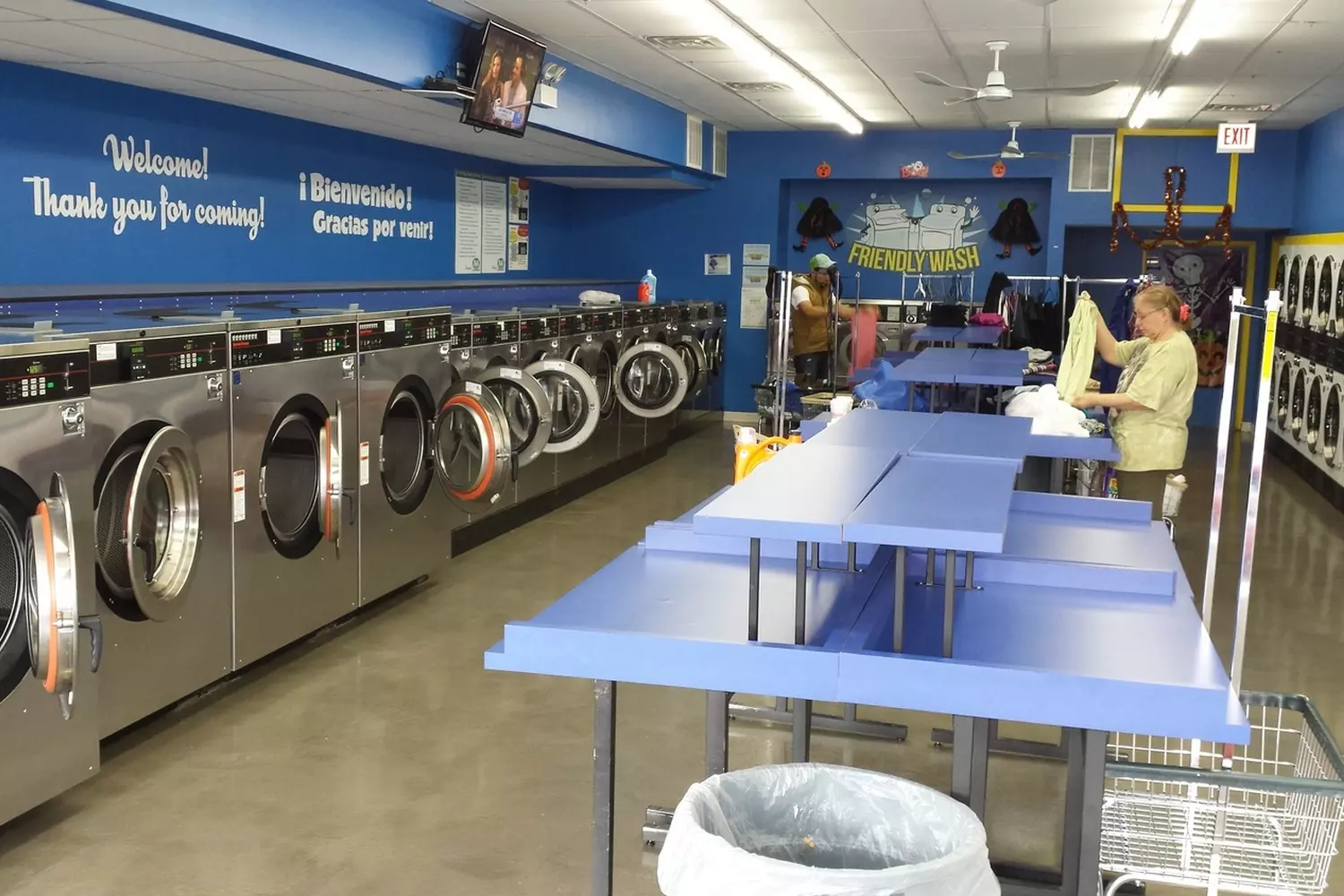
From the Mafia to dates: some unexpected reasons why laundromats are a cult in the USA
When we think of laundromats, the image that comes to mind is usually a boring room with humming machines. But in the USA, it’s a whole social phenomenon! In laundromats, people not only wash clothes — they meet new people, hide crimes, create art projects, and even hold championships. So why has ordinary laundry turned into something much bigger in America?
- 01. Laundromats as a Mafia tool for "money laundering"
In the 1930s, Al Capone and other gangsters used laundromats to legitimize income from illegal businesses. They didn’t care if the business was profitable — the main thing was that it looked legal and generated some income. This is how the term money laundering originated, now widely used in financial investigations. - 02. Migration and renting: why Americans don’t buy washing machines
Every year, about 16% of the US population (around 53 million people) move to another city or state. Landlords often forbid installing washing machines due to leakage risks, and rental apartments rarely have space for appliances. As a result, laundromats become the only option. - 03. Laundromats help the homeless
In some cities (such as Los Angeles and New York), there are "Shower + Laundry" programs where homeless people can wash clothes and take a shower for free. These places become not only a way to maintain hygiene but also temporary shelters. - 04. Laundromats as art spaces
In Brooklyn and Portland, there are "art laundromats" — walls decorated with local artists’ paintings, sometimes even hosting mini-exhibitions. Owners turn ordinary laundromats into creative venues, attracting new customers. - 05. Laundry as a sport?
In the US, there are championships for the fastest laundry loading (yes, it’s real!). Participants compete to see who loads a machine faster and neater, with winners getting free laundry for a year. - 06. "Smart" laundromats of the future
In Silicon Valley, robotic laundromats are being tested: you drop your clothes into a locker, and a robot sorts, washes, and dries them. Payment is through an app, no coins or queues. - 07. Eco trend: chemical-free laundry
In California and Oregon, "green" laundromats using only biodegradable detergents and energy-efficient machines are gaining popularity. They attract eco-conscious customers. - 08. Ghost laundromats
In Detroit and Baltimore, you can find abandoned laundromats from the 1950s that still work! Owners preserve retro interiors and vintage machines to attract tourists and film crews. - 09. Secret signs for insiders
In immigrant neighborhoods of New York, there are "coded laundromats." For example: a sign with a blue lantern means Chinese is spoken here; a yellow curtain means you can arrange unofficial work; a red sign means laundry services for restaurants (often illegal ones). - 10. Hotspots for spies
In the 1960s, the FBI installed bugs in laundromats near Soviet embassies. Today, some laundromats near government buildings are still considered “risk zones.”
The popularity of laundromats in the USA is a mix of historical, economic, and social factors. They don’t just solve the problem of dirty laundry but become places for socializing, work, and even small adventures. People meet, work, relax, and even hold art exhibitions here. These facts prove that laundromats in the USA are an alternative universe where technology, crime, and social trends intersect. They have long ceased to be just places for washing clothes, turning into a mirror of American culture.
P.S. The most unexpected fact: in Las Vegas, there is a laundromat where you can wash your suit and immediately place a bet on it at the roulette table. Luck begins with cleanliness!
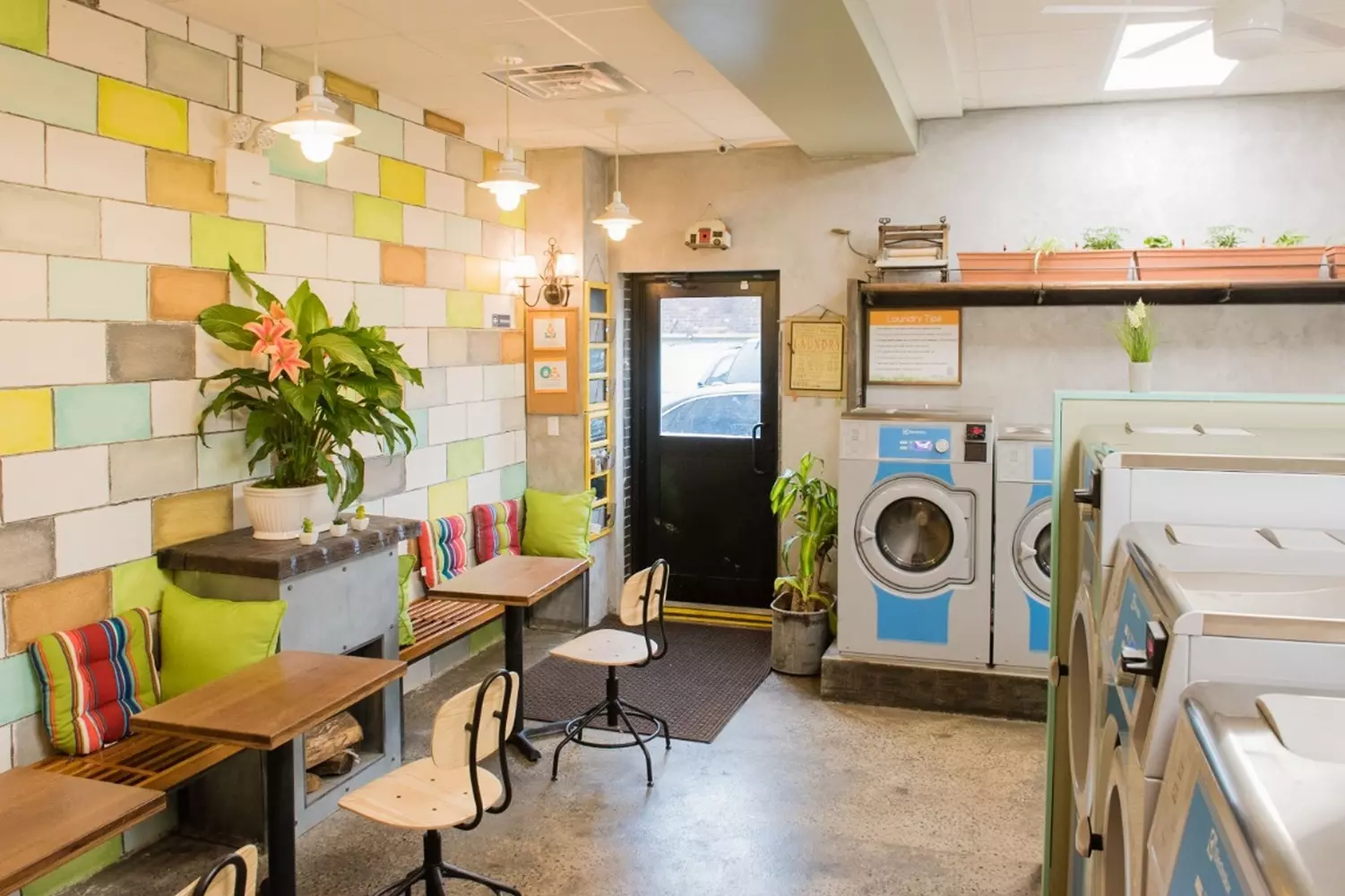
Support, adaptation, and daily life in the USA — together with American Butler
A laundromat in the USA is not just a place to wash clothes. It’s a part of urban culture, a kind of ingrained everyday ritual. People here don’t hesitate to be in sweatpants, with a book in hand or a laptop on their lap. You can meet neighbors, share news, drink coffee, wait for the laundry cycle to finish — and just take a little breather.
This is a story about choosing convenience and efficiency, about saving time, about adapting to the urban environment. And, ultimately, it’s about how even in small details the American approach to life — practical, precise, organized — shapes everyday routines.
Moving to the USA or planning a long stay? We’ll help you get settled in your new surroundings, understand local customs, find the best housing, and navigate everyday details, including small things like laundromats or shops in your neighborhood. With American Butler, you won’t face daily challenges alone.




































